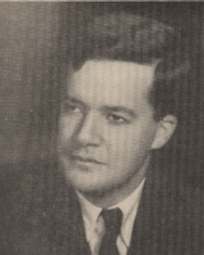History
The first degrees in engineering at the University of Melbourne were awarded in 1883.

It was not until 1889 that the Faculty of Engineering and Information Technology at the University was established with 8 members and 40 undergraduate students. The only degree course available was in Civil Engineering, reflecting the great changes in the industrial world of the nineteenth century that engineers had designed and manufactured. In the early days, the engineering degree was primarily an Arts course including Natural Philosophy (now Physics) and Geology, with specific engineering subjects to be completed at third and fourth year.
Separate degrees in Mechanical and Electrical Engineering commenced in 1911 but there was only one Department of Engineering. The first graduate in Electrical Engineering received his degree in 1913. However, the demands of a changing world and the disruption of two world wars refocussed the demands of the engineering department and required it to broaden its choice of subjects.

In 1946 the Faculty of Engineering and Information Technology divided the one existing Chair of Engineering to create three Chairs — one each of Civil, Mechanical and Electrical. Mr Charles Moorhouse, a past graduate of the Melbourne University School of Engineering and not yet a professor, was appointed Senior Lecturer in charge of the Department of Electrical Engineering in January 1947. A new staff member, Mr Arthur Ferguson, was appointed Senior Lecturer in Electronics, but it was not until 1948 that electronics appeared as part of the Electrical Engineering course.
In his 1947 Presidential Address to the Melbourne University Engineering Students’ Club (MUESC), recorded in Cranks & Nuts, Professor Blackwood, Dean of the Faculty, credited the rapid growth of secondary industries in Australia in the post-war years with the need for more graduates trained in mechanical and electrical engineering. The Faculty of Engineering and Information Technology and its new Departments were to develop and train young engineers to add to the strengths in industry that a young country needed. At that time there was a rapid expansion taking place in electricity generation and distribution networks and in 1954 Ken Mackley, whose research was supported by the Electrical Research Board, became the first PhD student to graduate from the department.

New courses and subjects were introduced in the early 1950s. This saw the introduction of electrical engineering subjects into second and third year as well as in fourth year. In 1954, Professor Moorhouse, who thought that engineering students should have the opportunity to study a wider range of subjects, pioneered the introduction of non-technical topics into engineering courses.
Subjects from literature, history, geography and the arts were introduced alongside technical subjects to counteract the perception that engineering courses were too insular. In 1955, space was provided for the Department in the new Mining Building and this greatly enhanced the teaching and research facilities available to the Electronics group.
Although research had always been carried out in the department, its value to a rapidly changing nation was becoming of greater importance in the 1960s. Postgraduate training and research was developed more fully throughout this period, particularly in the fields of power system stability, electronic circuit design, communications and control.
The 1970s brought many changes to the Department, not least among them the enrolment of female students. The Department of Electrical and Electronic Engineering was somewhat ahead of the other departments when it had two female graduates in 1974.
The Department moved to a new building on campus in 1973. The Department of Electrical Engineering continued to rapidly expand with the introduction of new courses. In 1974 research in Biomedical Engineering was undertaken by David Dewhurst. In the 1970s the Biomedical engineers pioneered the design of the micro-electronics of the cochlear implants of the bionic ear program initiated in Melbourne by Professor Graeme Clark and now in world-wide use. In 1975 a second Chair was introduced in Electronics and Communications but it was not until 1982 that the Department changed its name to include Electronics and become the Department of Electrical and Electronic Engineering.
50 Year Celebrations
Since its inception in 1947, the Department of Electrical and Electronic Engineering at the University of Melbourne has changed. From the fields of power and control we have come a long way to the world of ultra-broadband information networks, and both the teaching and research done in 2001 is light years from that conducted in the immediate post-war years. But the strengths of our current-day Department are firmly rooted in the past and in the foresight of those people who built the strong foundations upon which we base our disciplines.
In 1997 we held a year of celebrations to recognise and reflect upon the great achievements of the Department and to honour those individuals who made a lasting impact on how we view the Department today. As part of the festivities, we held a special graduation ceremony, named a new laboratory, launched a history book, held a banquet and began a Departmental Museum. An Oral History Project was instituted in 1998 as a result of the success of the 50th anniversary activities and the renewed interest in the history of our Department.
An official history of the Department of Electrical and Electronic Engineering, by Associate Professor John Packer, was launched in 1997 as part of the 50th Anniversary celebrations.